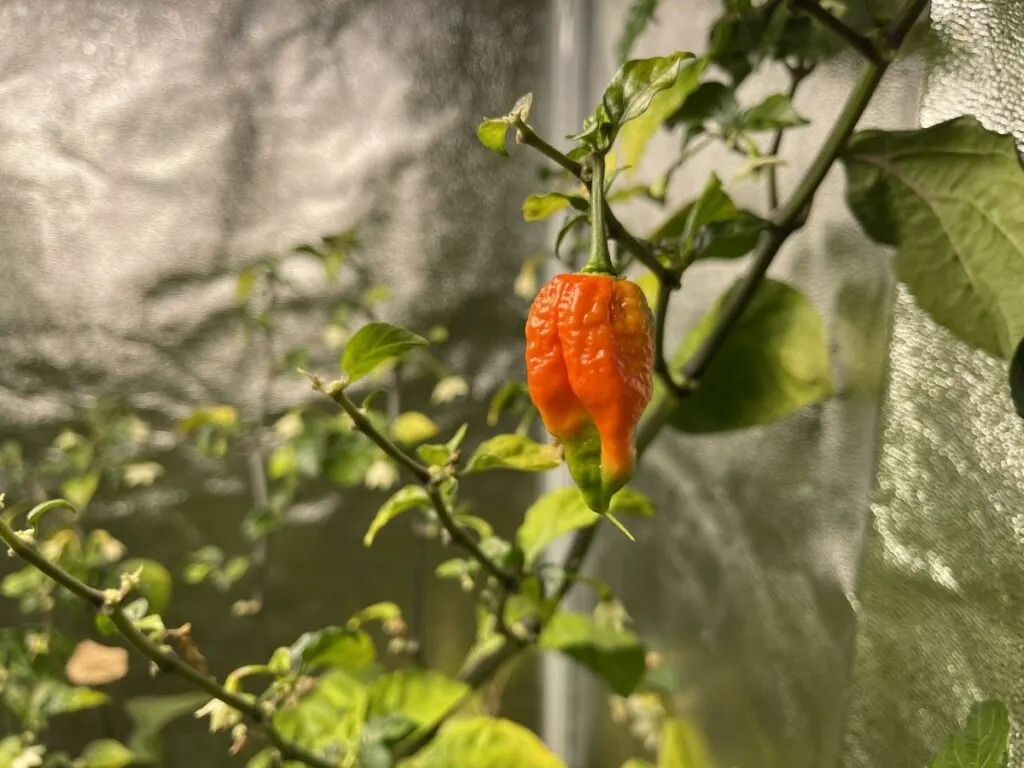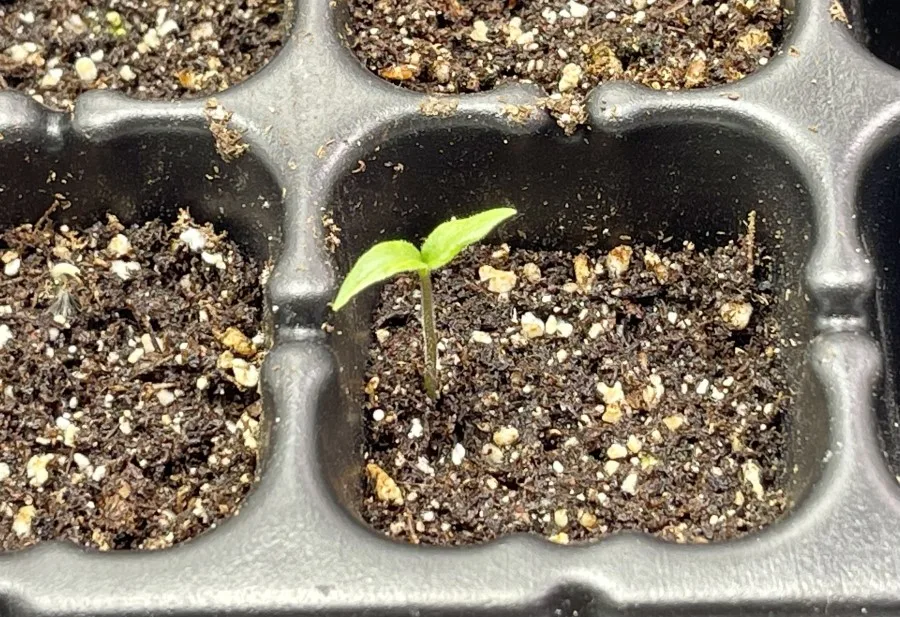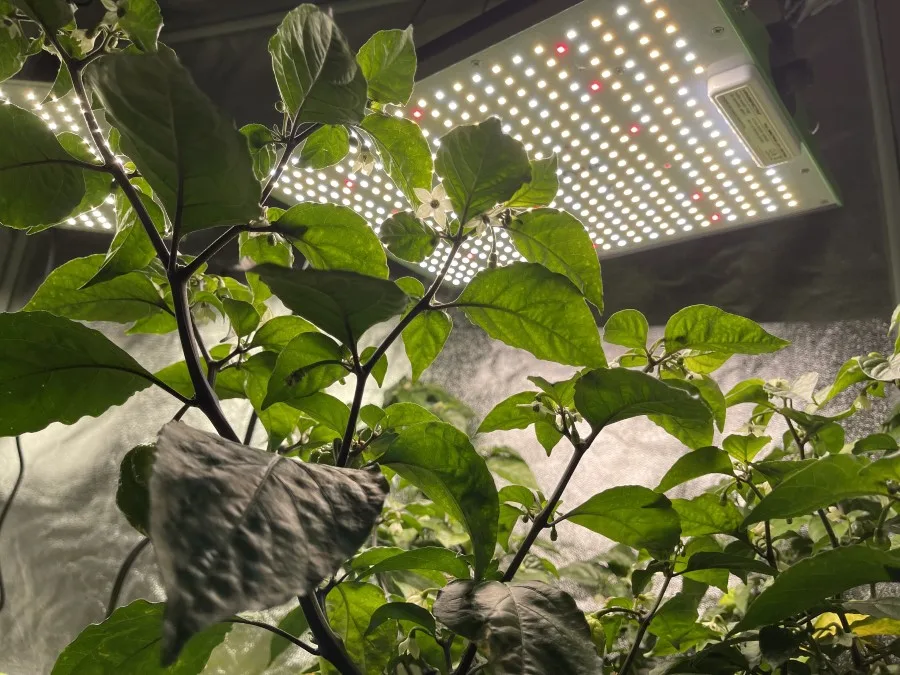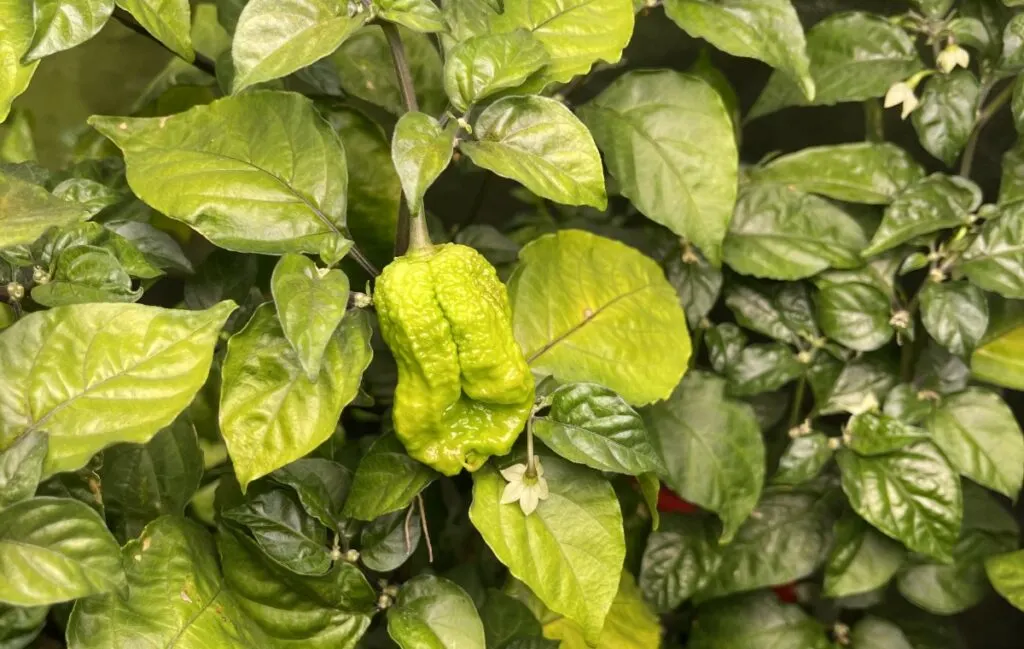If you’re a big fan of growing hot peppers, you’ve probably tried to grow a Carolina Reaper at some point. When growing these peppers you may have run into the issue of your Carolina Reaper plant growing very slowly, here’s why:
Your Carolina Reaper may be growing slowly because:
- The temperature is too low
- You are overwatering the Carolina Reaper plant
- You are underwatering the Carolina Reaper plant
- The soil pH level may not be at the ideal level of 6.5
- The Carolina Reaper plant is sunlight deficient
- The Carolina Reaper isn’t getting enough nutrients and needs fertilizing
Keep in mind that Carolina Reaper pepper plants do take some time to grow, and you will have to wait three to four months before you can harvest your peppers. But if you think your pepper plant is growing slower than expected, then it could be due to one of the reasons listed below.
As an Amazon Associate, I earn from qualifying purchases.

1. The Temperature is Too Low for Your Carolina Reapers
Carolina Reapers flourish in weather between 60 degrees Fahrenheit (15 degrees Celsius) and 80 degrees Fahrenheit (27 degrees Celsius). These plants love warmer weather. However, don’t let this lead you to believe you should put them out in the middle of a southern summer.
In reality, Carolina Reapers prefer temperatures that aren’t too hot or cold. However, they often can tolerate heat better than they tolerate cold. Once the temperature dips below about 50 degrees Fahrenheit (10 degrees Celsius), the plants begin to halt their growth.
They will typically stay alive if the temperature isn’t dipping below freezing, but the plants growth will appear nonexistent.
If temperatures drop lower than the plant prefers, you can move the plant indoors, into a greenhouse, or even surround it with plastic to help hold in the heat.
A thermometer can come in handy to help measure the temperature of your plants. We used a VIVOSUN Digital Indoor Hygrometer to help measure the temperature in our grow tent and keep our pepper plants nice and warm.
Keep in mind that the maturity level of your plant matters when it comes to deciding what temperature works best. Younger plants can’t handle as much of a temperature shift as well as more mature plants. Carolina Reaper plants can take roughly ninety days to reach full maturity.
2. You’re Overwatering Your Carolina Reaper
Pepper plants, including Carolina Reapers, need significantly less water than most plants. However, they can still be underwatered. We’ll discuss that in a moment.
Although slightly counterintuitive, one of the most common problems with a plant that is growing too slowly is that it’s being overwatered. Overwatering essentially drowns the plant and doesn’t allow the roots to get nutrients from the soil. As a result, the plant halts its growth and works hard to survive instead.
How much you water your Carolina Reaper depends on how you grow it—potted or in the ground. Usually, the plants will need significantly more water if they are in a pot versus the ground.
If you’ve been watering your plants daily or even every few days, it may be too much, if the Carolina Reaper is planted directly in the ground. This is because there are water reserves in the ground that the plants are pulling from. Continuously adding new water to the ground can very quickly overwhelm the plant.
When we grew our Carolina Reapers in 5-gallon pots in a grow tent, they needed water every other day when they were growing. But, they needed water almost every day once they reached full maturity.
3. You’re Underwatering Your Carolina Reaper
Underwatering is almost as common a problem as overwatering, and it can have detrimental consequences for your Carolina Reaper. While these plants don’t like too much water, they still need a significant amount, especially when potted in a container.
The best way to ensure you don’t over- or underwater your Carolina Reaper pepper plant is to touch the soil. If the soil feels dry, then go ahead and give your plant some water.
If the plant is being underwatered, it may begin to wilt. If this happens, you should water your plant, and continue to check on it until it stops looking wilted.
So, how much water is too little? If you notice that the plant is staying wilted and has stalled with its growth, chances are that it has been underwatered.

4. The Soil pH Level Isn’t Ideal
Carolina Reapers tend to be a bit picky when it comes to soil pH levels. If the pH level is too high or low the plant will grow slowly, or not grow at all.
Carolina Reaper plants prefer soil that is just slightly Alkaline with a pH level of about 6.5. You can measure your soil’s pH level with a simple at-home pH meter test.
If you notice that the soil pH is too Alkaline, for example, hovering around 7 or 8 on the pH scale, you can add acid-producing substances such as coffee grounds. If you notice it’s on the opposite spectrum and too acidic, you can add other substances, such as wood ash or dolomite lime.
This isn’t likely to be too big of an issue if you’ve planted the Reaper in potting soil that is already formulated with specific nutrients and pH levels. However, if you’ve planted your Carolina Reaper directly into the ground, you may run into some growth issues.
We used FoxFarm is an excellent brand of potting soils. My favorite is their Ocean Forest variety soil for our Carolina Reaper pepper plant, which has a pH level of 6.3 to 6.8.
For more on the subject, check out our article How to Measure and Adjust pH Levels in Soil.

5. Your Carolina Reaper Needs More Light
A Carolina Reaper plant will grow slower if it doesn’t get enough sunlight. Carolina Reapers, like most peppers, require between six to eight hours of direct sunlight to thrive.
Carolina Reaper plants prefer lots of light. In fact, these plants thrive in full direct sun as long as there isn’t too much heat present.
The problem is that the direct sun often amplifies the temperature quite a bit, which is one of the reasons some people don’t place their Carolina Reapers in direct sunlight.
If the plant receives too little sunlight, it won’t be able to take in as many nutrients as it needs. As a result, you will notice that the plant is growing significantly slower than it should be. It may even completely stop growing.
If your Carolina Reaper needs more sun, you may notice that the leaves are consistently pointed toward any point where light is coming through. The plant may appear to strain from the sunlight.
Grow lights may be a good investment, if you are unable to provide your plant with adequate light.
For our grow tent set up, we used VIPARSPECTRA P1500 LED Grow Light grow lights to ensure our Carolina Reaper plants were getting adequate amounts of direct light daily.

6. Your Carolina Reaper Needs More Nutrients
Carolina Reapers need the same primary nutrients that all plants need: Nitrogen, Phosphorus, and Potassium.
If any of these things are deficient, you will notice that the plant growth will be slow. This is a common experience, particularly when the plant has been planted outside.
Many outside forces influence the amount of nutrients your soil has in it at any time. For best results, you should consider adding nutrients through fertilizers.
Signs that your Reaper needs more nutrients include repeatedly wilting and halting growth for long periods. Usually, this will continue even if you add more water to the plant or move it into a location that gets more sunlight.
If your Carolina Reaper is potted and you’re growing it in garden soil, you can usually select specific soils that will help to get the most nutrients. Usually, using a fertilizer of a 5-10-5 ratio of nitrogen, phosphorus, and potassium is recommended.
Keep in mind that the plant also needs varying nutrients depending on its life stage. As a seedling, the plant needs different nutrients than a mature plant.
When our Carolina Reaper pepper plant was still developing, we used Miracle-Gro Performance Organics, and then switched to FoxFarm Tiger Bloom Fertilizer when it began to produce flowers/fruits.
For more on the subject, check out my article Carolina Reaper – Soil and Fertilizer Guide.
